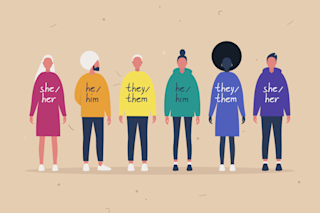It’s been known for a while that it takes less than a second for people to use their internal “gaydar” to decide if they think a man is homosexual or heterosexual, and such snap judgements tend to be right. But can facial differences be used to distinguish between different types of gay men — specifically, those who define themselves as “tops” versus “bottoms”?
To find out, the authors of this study recruited 23 participants from Amazon’s mTurk (including 7 females). The participants were asked to look at 200 photographs of gay men found on an online dating site (100 tops, 100 bottoms) and categorize them as tops or bottoms. Interestingly, they chose the correct roles at a rate better than chance, although they were biased towards choosing the male-stereotypical “top” role.
As you might have guessed, the participants were using cues related to masculinity (e.g., thick eyebrows, large noses) to ...












